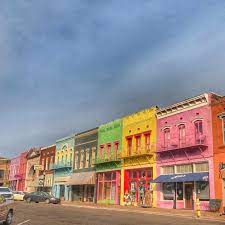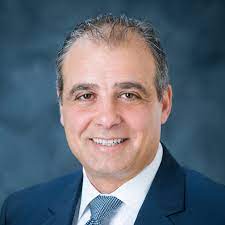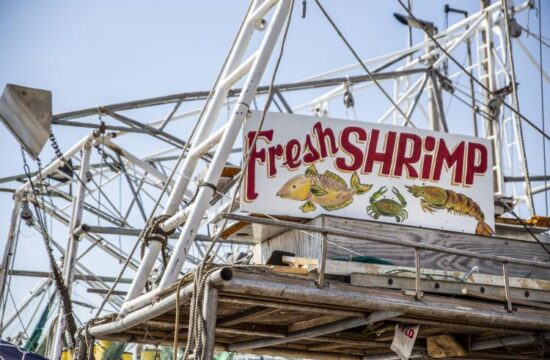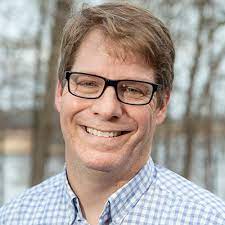Lydia Koltai, a herbalist and gardener, led a sensory immersion for the opening event of “Land & Power: The Summit”. She encouraged participants to be open to their natural environment and opened their eyes and ears to it. Artist Daniel Johnson said that nothing is better than finding a spot in the woods that has been prepared for your needs. The woodsy trek stopped at a sheet laid on the ground as an impromptu tablecloth. Maddie Jewess commented, “It feels magical.” This was not the first time that such a description would be used on that day. It would later describe the convergence and cross-pollination between participants, community groups, stories, and contacts throughout the afternoon and evening in Abbeville. This culmination event was part of johnson’s place-based artist residency. “Land & Power: The Summit”, one of two community-driven, artist-led place-based artist residencies that were held in Mississippi this year by the Mississippi Museum of Art’s Center for Art & Public Exchange, (CAPE). The goal of the residency is to bring together artists and communities in a collaborative exploration and understanding of Mississippi’s history and places. Following listening sessions in the state, a call was made for artist proposals. A selection was then made from the submitted submissions. The projects must be collaborative and reflect the goals, challenges, aspirations and CAPE goals of transparency equity and truth. Significant Developments was the Jackson creative strategy company that created and managed Lafayette County’s residency. Johnson envisioned the project using the same methods and as a piece of social practice art. To see how money flows through the markets and how it rises in exchanges between people, he had proposed that johnson dig up clay from different parts of Lafayette County. Although it was a vague goal, it was a good metaphor for the soft, malleable beginning that was transformed into something stronger and more durable. The community conversations began with the usual arts leaders and culture leaders. They then expanded to include people who work with civil rights and with farmers, as well as the wider local community. Johnson stated that the center of gravity was the relationship between power and land. Clay coins were a kind of currency for conversation, each one representing a piece of land belonging to someone else. It was also a token of appreciation for each person’s time and attention. Fair exchange and permaculture were discussed, as well as lynching commemoration, a dance approach for a history of enslaved, civil rights, litigation, land through the lens of film and the county’s legacy in black land ownership. All of these topics were covered in shared spaces that allowed participants to share their stories and offer fresh perspectives on deeper issues. Jennifer Mizenko, a dance professor, presented video that highlighted projects that put people in the shoes and experiences of others. This included Jane, the enslaved woman Jane was assaulted at the home of the chancellor in 1859. It’s hard material. It is difficult to go there but there is a lot power and freedom when we come out of the other side,” Mizenko stated. Another shared a nuanced perspective on the legacy of black landownership, with stories of resilience and autonomy in Mississippi’s hillcountry — often overlooked because the Delta dominates the national image of the state. Peairs is passionate about the legacy. She is the great-great granddaughter of slaves who were freed and some land has been in her family for more than 100 years. As the community ate a meal featuring Chicory Market’s locally-sourced food, it was a chance to reflect on those local economies that nourished them. John Martin, market owner, noted that a Selmer, Tennessee supplier is a farmer who works hard on one acre and yet has wide distribution. “In that model he’s taken an area of land and made them very powerful.” Some collaborators felt the day’s conclusion felt more like a start than a finish. Jason Bouldin, portraitist, described it as “a priming the pump…an introduction, a splash on the face”. Robert Saarnio, University of Mississippi Museum Director, found a key and enlightening lesson in understanding the residency as social-practice art. “What I thought was activism or community organizing is now social practice art. He said that the museum’s value will be tangible. This will allow us to be more actively engaged with the community. “It’s about exchange.” He explained strategies such as community dialogue, crowdsourcing exhibitions and inviting active input. All these strategies contribute to a more vibrant and interesting museum. April Grayson, filmmaker and oral historian, stated that the residency helped her to develop and refine the language necessary to describe the interconnectedness and fabric of her work. It’s a magical experience for me to see many different parts of my life. From oral history work with Mississippi Rural Legal Services, to the lynching commemoration work I do for Winter Institute, and to my own video-making, all of this is much more synthesized. “This process helped me recommit myself to Mississippi as a native Mississippian, having had a push-pull relationship to the state.” Peairs, an Oxford native, said that she’d seen a long separation between the University of Mississippi (and the community) and its working base. Peairs saw the residency as a tie-in to this year’s push for public history projects. “Any chance, regardless of whether it is performance art, whether dance and movement or spoken word — anything that can get the stories out to people, is what it’s worth. I have been very, really happy and proud of the progressive elements of my community this year that have been engaging all of our neighbors with the stories that are here.” Johnson described the development of the residency as “You soak people enough imagination that they see in one another what they can create.”_x000D










